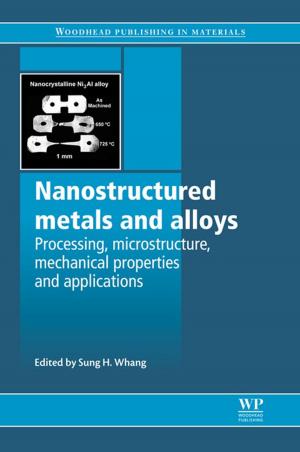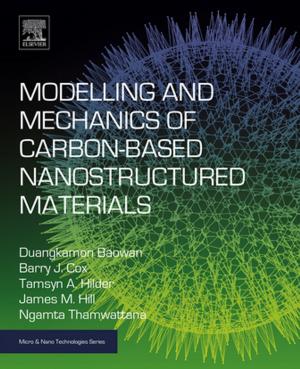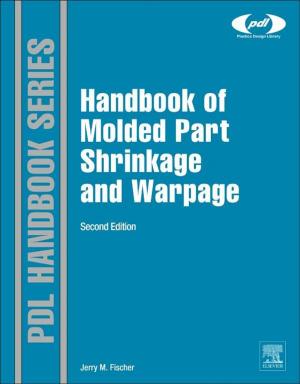Thermo-Mechanical Modeling of Additive Manufacturing
Nonfiction, Science & Nature, Technology, Material Science| Author: | ISBN: | 9780128118214 | |
| Publisher: | Elsevier Science | Publication: | August 3, 2017 |
| Imprint: | Butterworth-Heinemann | Language: | English |
| Author: | |
| ISBN: | 9780128118214 |
| Publisher: | Elsevier Science |
| Publication: | August 3, 2017 |
| Imprint: | Butterworth-Heinemann |
| Language: | English |
Thermo-mechanical Modeling of Additive Manufacturingprovides the background, methodology and description of modeling techniques to enable the reader to perform their own accurate and reliable simulations of any additive process. Part I provides an in depth introduction to the fundamentals of additive manufacturing modeling, a description of adaptive mesh strategies, a thorough description of thermal losses and a discussion of residual stress and distortion. Part II applies the engineering fundamentals to direct energy deposition processes including laser cladding, LENS builds, large electron beam parts and an exploration of residual stress and deformation mitigation strategies. Part III concerns the thermo-mechanical modeling of powder bed processes with a description of the heat input model, classical thermo-mechanical modeling, and part scale modeling.
The book serves as an essential reference for engineers and technicians in both industry and academia, performing both research and full-scale production. Additive manufacturing processes are revolutionizing production throughout industry. These technologies enable the cost-effective manufacture of small lot parts, rapid repair of damaged components and construction of previously impossible-to-produce geometries. However, the large thermal gradients inherent in these processes incur large residual stresses and mechanical distortion, which can push the finished component out of engineering tolerance. Costly trial-and-error methods are commonly used for failure mitigation. Finite element modeling provides a compelling alternative, allowing for the prediction of residual stresses and distortion, and thus a tool to investigate methods of failure mitigation prior to building.
- Provides understanding of important components in the finite element modeling of additive manufacturing processes necessary to obtain accurate results
- Offers a deeper understanding of how the thermal gradients inherent in additive manufacturing induce distortion and residual stresses, and how to mitigate these undesirable phenomena
- Includes a set of strategies for the modeler to improve computational efficiency when simulating various additive manufacturing processes
- Serves as an essential reference for engineers and technicians in both industry and academia
Thermo-mechanical Modeling of Additive Manufacturingprovides the background, methodology and description of modeling techniques to enable the reader to perform their own accurate and reliable simulations of any additive process. Part I provides an in depth introduction to the fundamentals of additive manufacturing modeling, a description of adaptive mesh strategies, a thorough description of thermal losses and a discussion of residual stress and distortion. Part II applies the engineering fundamentals to direct energy deposition processes including laser cladding, LENS builds, large electron beam parts and an exploration of residual stress and deformation mitigation strategies. Part III concerns the thermo-mechanical modeling of powder bed processes with a description of the heat input model, classical thermo-mechanical modeling, and part scale modeling.
The book serves as an essential reference for engineers and technicians in both industry and academia, performing both research and full-scale production. Additive manufacturing processes are revolutionizing production throughout industry. These technologies enable the cost-effective manufacture of small lot parts, rapid repair of damaged components and construction of previously impossible-to-produce geometries. However, the large thermal gradients inherent in these processes incur large residual stresses and mechanical distortion, which can push the finished component out of engineering tolerance. Costly trial-and-error methods are commonly used for failure mitigation. Finite element modeling provides a compelling alternative, allowing for the prediction of residual stresses and distortion, and thus a tool to investigate methods of failure mitigation prior to building.
- Provides understanding of important components in the finite element modeling of additive manufacturing processes necessary to obtain accurate results
- Offers a deeper understanding of how the thermal gradients inherent in additive manufacturing induce distortion and residual stresses, and how to mitigate these undesirable phenomena
- Includes a set of strategies for the modeler to improve computational efficiency when simulating various additive manufacturing processes
- Serves as an essential reference for engineers and technicians in both industry and academia















